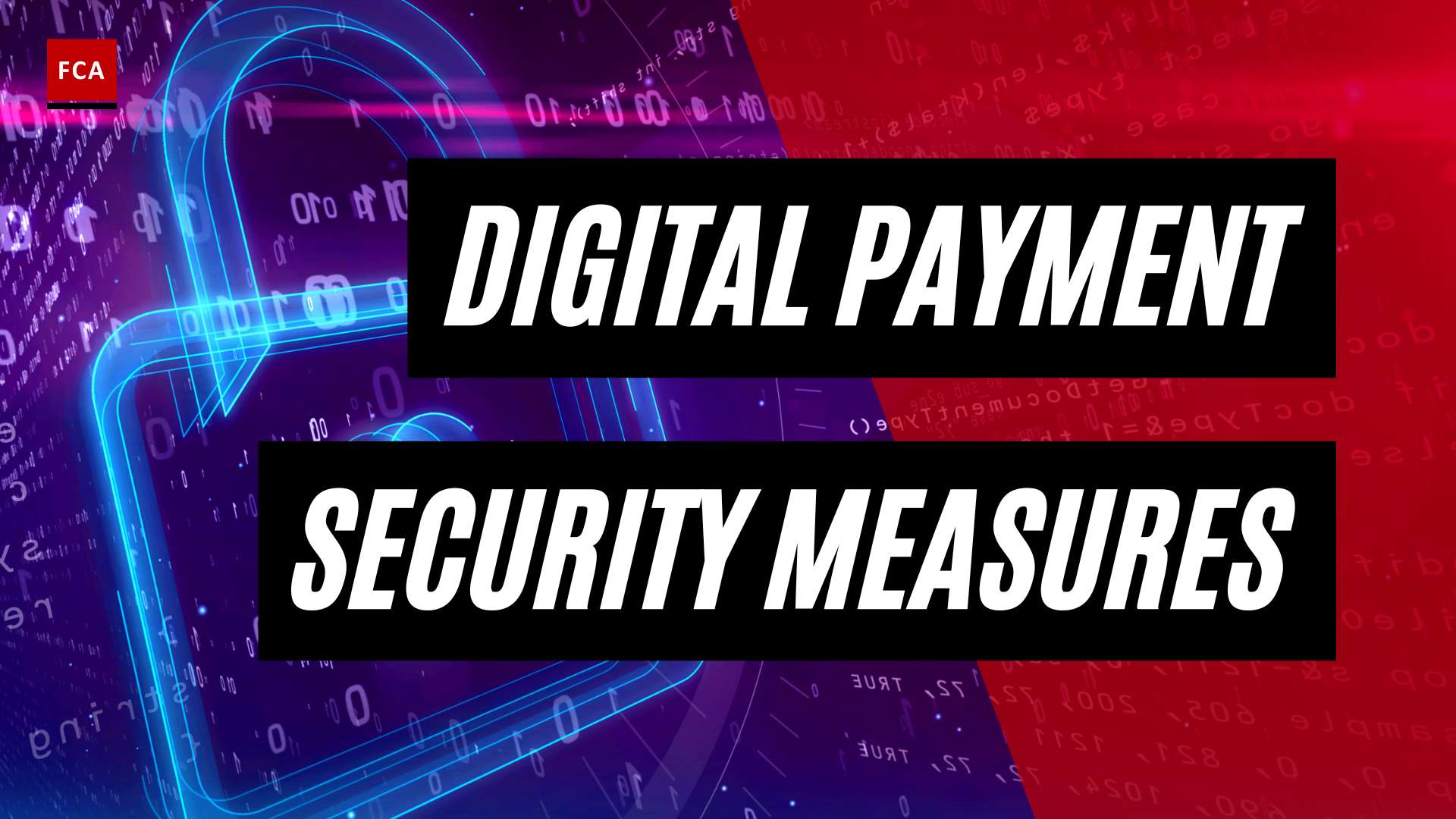Introduction to Multi-Modal Biometric Systems
In the ever-evolving landscape of biometric verification technologies, multi-modal biometric systems have emerged as a powerful solution for enhancing security and improving the user experience. These systems leverage multiple forms of biometric authentication, such as fingerprint recognition, face recognition, iris recognition, voice recognition, and behavioral biometrics, to create a robust approach to account security.
Enhancing Security and User Experience
Multi-modal biometric systems offer a number of advantages that contribute to both security and user experience. By combining multiple biometric modalities, these systems provide a more comprehensive and accurate identification process, reducing the risk of unauthorized access and fraudulent activities.
One significant advantage of multi-modal biometric systems is their ability to achieve higher accuracy rates compared to single-modal systems. The integration of multiple biometric technologies allows for cross-verification, minimizing the False Acceptance Rate (FAR) and the False Rejection Rate (FRR) (CREST Research). This increased accuracy ensures that only authorized individuals are granted access, enhancing overall security.
Moreover, multi-modal biometric systems offer resilience against spoof attacks, where an individual attempts to deceive the system using counterfeit biometric features. By requiring multiple biometrics for authentication, the difficulty of faking two or more biometrics simultaneously makes it significantly more challenging for attackers to breach the system.
From a user perspective, multi-modal biometric systems provide increased convenience compared to traditional authentication methods. Users no longer need to remember complex passwords or carry physical tokens. Instead, they can simply authenticate themselves using a combination of biometric traits, which are inherently unique to each individual.
Advantages of Multi-Modal Biometric Systems
The advantages of multi-modal biometric systems can be summarized as follows:
-
Improved Identity Authentication Accuracy: By combining multiple biometric modalities, multi-modal biometric systems achieve higher accuracy rates compared to single-modal systems, reducing both false acceptance and false rejection rates. This enhanced accuracy ensures that only authorized individuals are granted access.
-
Enhanced Security and Reduced False Acceptance: Multi-modal biometric systems offer higher levels of security compared to unimodal systems, as the need to fake two or more biometrics simultaneously is significantly more difficult for attackers. This reduces the risk of unauthorized access and fraudulent activities.
-
Resilience Against Spoof Attacks: By requiring multiple biometrics for authentication, multi-modal biometric systems provide increased protection against spoof attacks. The combination of different biometric traits makes it more challenging for attackers to deceive the system using counterfeit or replicated biometric features.
-
Increased Convenience for Users: Multi-modal biometric systems provide a convenient and user-friendly authentication experience. Users no longer need to remember passwords or carry physical tokens, as they can simply authenticate themselves using a combination of biometric traits that are unique to them.
As multi-modal biometric systems continue to evolve, advancements in technology, increasing adoption, and evolving security demands are shaping the future of these systems. In the following sections, we will explore the different biometric modalities used in multi-modal systems, considerations for implementation, benefits, limitations, applications, and the future of this innovative technology.
Biometric Modalities in Multi-Modal Systems
Multi-modal biometric systems leverage the power of multiple biometric modalities to enhance recognition accuracy and security. By combining various biometric technologies, such as fingerprint recognition, face recognition, iris recognition, voice recognition, and behavioral biometrics, these systems provide a robust and reliable means of identification and authentication.
Fingerprint Recognition
Fingerprint recognition is one of the most widely recognized and utilized biometric modalities. It involves capturing and analyzing the unique patterns and ridges on an individual’s fingertips. Fingerprint recognition is highly accurate and widely accepted due to the distinctiveness and permanence of fingerprints. This modality is extensively used in both law enforcement and commercial applications for identity verification and access control.
Face Recognition
Face recognition technology analyzes the unique facial features of an individual to establish their identity. It captures characteristics such as the shape of the face, the distance between facial landmarks, and the texture of the skin. Face recognition is non-intrusive and convenient, making it suitable for various applications, including surveillance, access control, and mobile device authentication. Advances in artificial intelligence and deep learning have significantly improved the accuracy and reliability of face recognition systems.
Iris Recognition
Iris recognition technology utilizes the intricate patterns within the iris, the colored part of the eye, to identify individuals. The unique characteristics of the iris, including its texture and random patterns, make it highly distinctive and difficult to forge. Iris recognition systems are known for their high accuracy and reliability, even in challenging environments. They are commonly used in high-security applications such as border control and national identification programs.
Voice Recognition
Voice recognition, also known as speaker recognition, analyzes the unique characteristics of an individual’s voice to establish their identity. This modality captures and analyzes factors such as pitch, tone, and speech patterns. Voice recognition is commonly used in telephony systems, voice assistants, and call centers for authentication purposes. However, it is worth noting that voice recognition can be affected by factors such as background noise and variations in speech due to illness or emotional state.
Behavioral Biometrics
Behavioral biometrics focus on the unique behavioral patterns exhibited by individuals. These patterns include keystroke dynamics, gait analysis, signature recognition, and mouse usage. Behavioral biometrics offer a passive and continuous form of authentication, as they can be collected in the background without requiring explicit user interaction. This modality is often used in fraud detection and continuous authentication systems.
By combining these different biometric modalities, multi-modal biometric systems achieve higher accuracy, increased security, and reduced vulnerability to spoof attacks. The integration of multiple biometric technologies helps overcome the limitations of individual modalities, resulting in robust and reliable identification and authentication solutions.
To learn more about the benefits, drawbacks, and applications of multi-modal biometric systems, continue reading our comprehensive article on biometric verification technologies.
Liveness Detection in Multi-Modal Biometric Systems
To ensure the integrity and security of biometric identity verification, liveness detection plays a crucial role in multi-modal biometric systems. Liveness detection is a spoof-proof authentication method that compares a selfie or voice capture to assure it’s from a live individual (Mitek Systems). By incorporating liveness detection into the authentication process, multi-modal biometric systems can enhance security and provide a convenient user experience.
Spoof-Proof Authentication
Spoof attacks, where an unauthorized individual attempts to imitate someone else’s biometric traits, pose a significant threat to biometric systems. Liveness detection helps mitigate this risk by verifying the authenticity of the biometric samples provided during the authentication process. This involves analyzing various factors, such as facial movements, blinking, or vocal patterns, to ensure that the captured biometric data is from a live person rather than a spoofed source.
Active and Passive Approaches
Liveness detection in multi-modal biometric systems can be implemented using active and passive approaches.
-
Active Approaches: Active liveness detection methods require the user to perform specific actions or responses to prove their liveliness. For example, the system may prompt the user to blink, smile, or follow certain instructions during the biometric capture process. By actively engaging the user, the system can detect and differentiate live individuals from spoof attempts.
-
Passive Approaches: Passive liveness detection methods, on the other hand, aim to detect liveliness without requiring explicit user participation. These methods analyze various aspects of the biometric data, such as micro-movements in the face or the presence of natural vocal characteristics, to determine whether the submitted samples are from a live person. Passive liveness detection provides a seamless user experience, as it does not require additional user actions during the authentication process.
By combining active and passive approaches, multi-modal biometric systems can significantly enhance the security and reliability of the authentication process. These systems not only verify the user’s identity using multiple biometric modalities but also ensure that the captured biometric data is from a live individual, making it extremely difficult for fraudsters to bypass the system.
Liveness detection is just one aspect of the overall capabilities of multi-modal biometric systems. These systems offer numerous benefits, including improved identity authentication accuracy, enhanced security and reduced false acceptance, resilience against spoof attacks, and increased convenience for users. To explore these benefits further, continue reading our article on biometric verification technologies.
In the next section, we will delve into the considerations and challenges involved in implementing multi-modal biometric systems.
Implementing Multi-Modal Biometric Systems
Implementing multi-modal biometric systems requires careful consideration of several factors to ensure successful deployment and utilization. These considerations include security requirements and integration, user enrollment processes, and technical complexity. By addressing these aspects, organizations can effectively harness the potential of multi-modal biometric systems for enhanced security and user experience.
Considerations for Implementation
When implementing multi-modal biometric systems, organizations must carefully assess their specific requirements and objectives. This involves evaluating the level of security needed and understanding the existing technology infrastructure. By conducting a comprehensive analysis, organizations can determine the most suitable multi-modal biometric solution that aligns with their compliance and risk management strategies.
Ensuring a smooth integration of multi-modal biometric systems with existing technology stacks is crucial. Compatibility with other security systems, databases, and applications should be considered to facilitate seamless interoperability. This integration allows for efficient data sharing and comprehensive biometric identity management and biometric identity verification.
Security Requirements and Integration
Security is paramount when implementing multi-modal biometric systems. Organizations should evaluate their specific security requirements and select a solution that provides robust protection against unauthorized access and biometric fraud. This includes assessing the system’s ability to detect and prevent spoofing attempts and ensuring compliance with relevant regulations and standards.
Integrating multi-modal biometric systems with existing security frameworks is essential for effective implementation. This integration facilitates seamless authentication processes and provides a holistic approach to security. By leveraging existing infrastructure, organizations can enhance their biometric compliance solutions and strengthen their overall anti-money laundering (AML) efforts.
User Enrollment Processes
User enrollment processes play a vital role in the successful implementation of multi-modal biometric systems. Organizations need to establish efficient and user-friendly procedures for capturing and registering biometric data. This involves educating users about the system, obtaining consent, and guiding them through the enrollment process.
Organizations should ensure that the enrollment process is accessible, convenient, and respects user privacy. Clear instructions and user-friendly interfaces contribute to a positive user experience, promoting user acceptance and adoption of the biometric system. Additionally, organizations should establish proper data management practices to safeguard user information and comply with data protection regulations.
Technical Complexity
Implementing multi-modal biometric systems can involve technical complexities that require careful consideration. Organizations should assess the system’s technical requirements, such as hardware, software, and network infrastructure. This includes evaluating the scalability and compatibility of the system to accommodate future growth and evolving security demands.
It is crucial to engage with experienced vendors or technology partners who can provide guidance and support throughout the implementation process. These experts can assist with system configuration, integration, and ongoing technical support to ensure a seamless deployment and operation of the multi-modal biometric system.
By addressing the considerations for implementation, organizations can leverage multi-modal biometric systems to enhance security, streamline authentication processes, and meet AML compliance requirements. The successful implementation of these systems contributes to improved identity authentication accuracy, enhanced security, and reduced risk of false acceptance, ultimately strengthening the overall AML framework.
Benefits of Multi-Modal Biometric Systems
Multi-modal biometric systems offer numerous benefits for identity authentication and security. By combining multiple biometric modalities, these systems provide improved accuracy, enhanced security, resilience against spoof attacks, and increased convenience for users.
Improved Identity Authentication Accuracy
One of the key advantages of multi-modal biometric systems is the improved accuracy in identity authentication. By using multiple biometric traits, such as fingerprint recognition, face recognition, iris recognition, voice recognition, and behavioral biometrics, these systems achieve higher accuracy rates compared to single-modal systems. The combination of multiple biometric modalities helps to minimize both the False Acceptance Rate (FAR) and the False Rejection Rate (FRR), leading to more reliable and robust identity verification (CREST Research). This accuracy is crucial in various industries, including biometric compliance solutions, anti-money laundering (AML), and risk management.
Enhanced Security and Reduced False Acceptance
Multi-modal biometric systems provide enhanced security compared to unimodal systems. By combining two or more biometric technologies, these systems make it more challenging for hackers to fake multiple biometrics, reducing the risk of unauthorized access (CREST Research). The complementary information provided by different biometric traits improves the overall security and reduces the false acceptance rate (ScienceDirect). This increased level of security is particularly important in industries such as biometric identity verification, biometric fraud prevention, and anti-money laundering (AML) where accurate and reliable identification is crucial.
Resilience Against Spoof Attacks
Spoof attacks, where unauthorized individuals attempt to deceive the biometric system, pose a significant threat to security. Multi-modal biometric systems offer resilience against such attacks by requiring the spoofers to fake multiple biometric traits, making it more difficult to bypass the system (ScienceDirect). The combination of different biometric modalities adds an extra layer of protection, reducing the vulnerability to spoof attacks and ensuring the integrity of the authentication process. This feature is particularly vital in industries such as biometric transaction monitoring, biometric watchlist screening, and government applications.
Increased Convenience for Users
Another advantage of multi-modal biometric systems is the increased convenience they offer to users. By integrating different biometric technologies, these systems provide flexibility and adaptability to diverse security needs (M2SYS). Users can choose the combination of biometric modalities based on their preferences and requirements. This customization ensures optimal performance, user satisfaction, and acceptance. Additionally, multi-modal biometric systems reduce reliance on a single modality, providing users with alternative options for authentication, making the process more convenient and accessible.
In summary, multi-modal biometric systems offer numerous benefits, including improved identity authentication accuracy, enhanced security, resilience against spoof attacks, and increased convenience for users. These systems are at the forefront of identity verification technologies and play a crucial role in industries such as compliance, risk management, anti-money laundering (AML), and anti-financial crime. As technology advances and security demands evolve, multi-modal biometric systems are expected to play an increasingly important role in ensuring secure and reliable identity verification.
Drawbacks and Limitations of Multi-Modal Biometric Systems
While multi-modal biometric systems offer numerous advantages, it is important to consider their drawbacks and limitations. Understanding these factors is crucial for organizations implementing such systems in their anti-money laundering (AML) efforts.
Higher Costs and Technical Requirements
One of the main challenges associated with multi-modal biometric systems is the higher cost compared to single-modal systems. The cost of implementing a multi-modal system includes not only the system itself but also the required computing power and storage space for biometric data. These factors can make multi-modal systems less accessible, particularly for smaller organizations or those with limited resources (CREST Research).
Additionally, the technical requirements for deploying multi-modal biometric systems can be more demanding. These systems often require advanced hardware and software capabilities to handle the processing and integration of multiple biometric modalities. Organizations must consider these technical requirements, which can involve significant investment in infrastructure and resources.
Environmental Factors and Accuracy
Multi-modal biometric systems can be influenced by environmental factors that affect the accuracy of biometric measurements. Factors such as lighting conditions and noise levels can impact the quality of biometric data captured during the authentication process. Inconsistent or suboptimal environmental conditions may result in decreased recognition accuracy and potential false acceptance or rejection rates.
To mitigate the impact of environmental factors, organizations should carefully consider the deployment environment and ensure that adequate lighting, sound control, and other environmental factors are taken into account. Regular maintenance and calibration of biometric sensors and devices are also essential to maintain accuracy and performance.
Accessibility and User Considerations
While multi-modal biometric systems offer enhanced security and accuracy, they may pose challenges in terms of user accessibility. Some individuals may have physical or medical conditions that make it difficult or impossible to provide certain biometric measurements. For example, individuals with severe hand injuries may struggle to provide fingerprint data, while individuals with certain eye conditions may face challenges in iris recognition.
Organizations implementing multi-modal biometric systems must consider alternative authentication methods or accommodations for individuals who are unable to participate in certain biometric measurements. This can involve providing alternative options for user enrollment, such as using behavioral biometrics or considering other forms of identification in conjunction with biometric verification.
By recognizing these drawbacks and limitations, organizations can make informed decisions about the implementation and use of multi-modal biometric systems in their AML efforts. While these challenges exist, the benefits of improved identity authentication accuracy, enhanced security, and resilience against spoof attacks often outweigh the limitations. Organizations should carefully evaluate their specific needs, resources, and user considerations to ensure successful integration and utilization of multi-modal biometric systems in AML processes.
Applications of Multi-Modal Biometric Systems
Multi-modal biometric systems are finding applications in various sectors due to their enhanced security features and improved performance in real-world scenarios. By combining different biometric technologies, these systems offer increased accuracy, reliability, and fraud prevention capabilities. Let’s explore some of the key applications of multi-modal biometric systems.
Airports and Border Security
Airports and border security agencies are increasingly implementing multi-modal biometric systems to enhance identity verification processes and improve security. These systems can seamlessly integrate fingerprint recognition, face recognition, and iris recognition technologies to ensure accurate identification of individuals. By combining multiple biometric modalities, airports and border control authorities can strengthen the screening process, streamline passenger flow, and prevent unauthorized entry.
Government and Finance
In the government and finance sectors, where high-security standards are essential, multi-modal biometric systems play a crucial role in identity verification and fraud prevention. These systems are used for secure access control to government facilities, secure authentication in financial transactions, and secure identity verification for government services. By utilizing a combination of biometric modalities such as fingerprint, face, and voice recognition, the systems provide robust security and reduce the risk of unauthorized access or fraudulent activities.
Healthcare and Healthcare
Multi-modal biometric systems are also finding applications in the healthcare industry. These systems can be used for secure patient identification, ensuring accurate matching of medical records and preventing identity theft. By integrating fingerprint recognition, palm vein recognition, or iris recognition, healthcare organizations can enhance patient safety and protect sensitive medical information. Additionally, multi-modal biometric systems can streamline access control to restricted areas within healthcare facilities, ensuring only authorized personnel can enter sensitive areas.
By leveraging the capabilities of multi-modal biometric systems, these sectors benefit from enhanced security, reduced false acceptance rates, and improved fraud prevention. The versatility and effectiveness of these systems in various applications highlight their growing significance in modern identification and authentication practices.
To learn more about biometric verification technologies and their role in Anti-Money Laundering (AML) compliance, visit our article on biometric verification technologies.
The Future of Multi-Modal Biometric Systems
As technology continues to advance, multi-modal biometric systems are poised to play an increasingly significant role in various industries. These systems combine two or more biometric modalities, such as fingerprint recognition, face recognition, iris recognition, voice recognition, and behavioral biometrics, to provide enhanced security and accuracy in identification and authentication processes. Let’s explore the future of multi-modal biometric systems by examining advancements in technology, increasing adoption and integration, and evolving security demands.
Advancements in Technology
Advancements in technology are driving the continuous improvement of multi-modal biometric systems. Researchers and developers are constantly exploring new algorithms, techniques, and hardware innovations to enhance the performance and reliability of these systems. By leveraging machine learning, artificial intelligence, and deep learning algorithms, multi-modal biometric systems can continually adapt and improve their accuracy, even in challenging real-world scenarios (ScienceDirect). These advancements will further enhance the robustness and effectiveness of multi-modal biometric systems, making them even more reliable and secure.
Increasing Adoption and Integration
The adoption of multi-modal biometric systems is on the rise across various industries. These systems are being embraced in applications such as access control, border security, financial transactions, healthcare, and surveillance (ScienceDirect). The integration of multiple biometric modalities provides a more comprehensive and accurate identification and authentication process, reducing vulnerability to spoof attacks and enhancing system robustness. The increasing adoption and integration of multi-modal biometric systems demonstrate their versatility and effectiveness in diverse industries and settings.
Evolving Security Demands
As security threats continue to evolve, there is a growing demand for advanced authentication solutions. Multi-modal biometric systems offer a proactive approach to security by combining different biometric modalities. This makes them more resilient against spoof attacks, reduces false acceptance and false rejection rates, and enhances overall security (M2SYS). Organizations across sectors such as banking, government services, and healthcare are recognizing the importance of multi-modal biometric systems in meeting evolving security demands (M2SYS). These systems provide an effective means to combat fraud, protect sensitive information, and ensure the integrity of identification and authentication processes.
The future of multi-modal biometric systems is promising. Advancements in technology will continue to improve the performance and accuracy of these systems. Increasing adoption and integration across industries will drive innovation and further establish multi-modal biometric systems as a reliable and secure authentication solution. As security demands continue to evolve, multi-modal biometric systems will play a key role in meeting the challenges of a rapidly changing security landscape.








